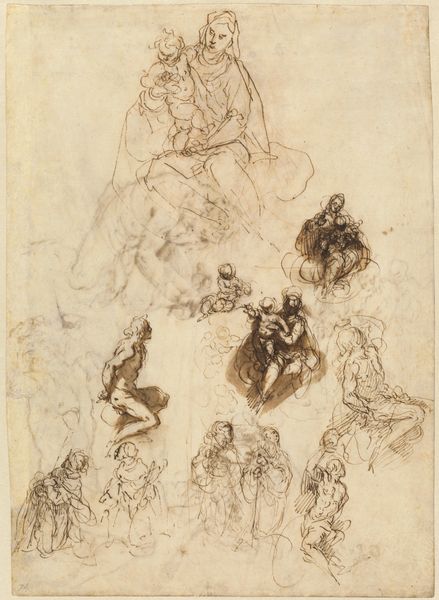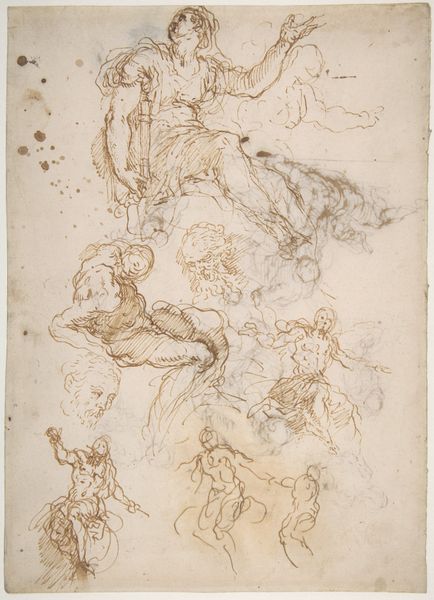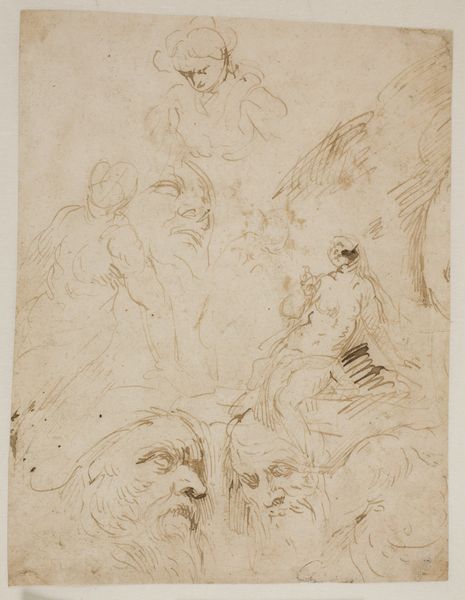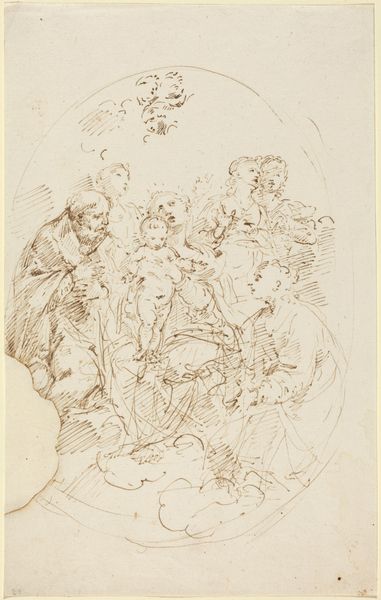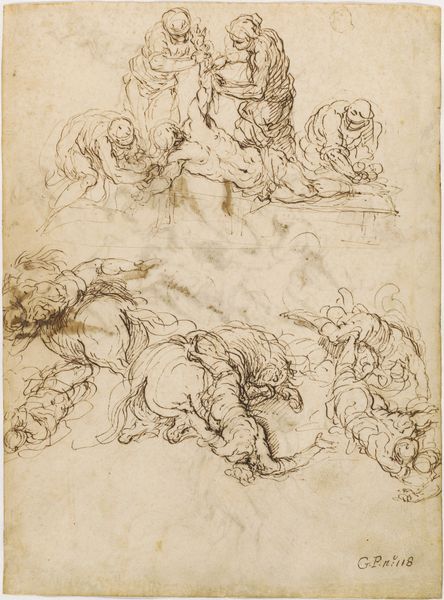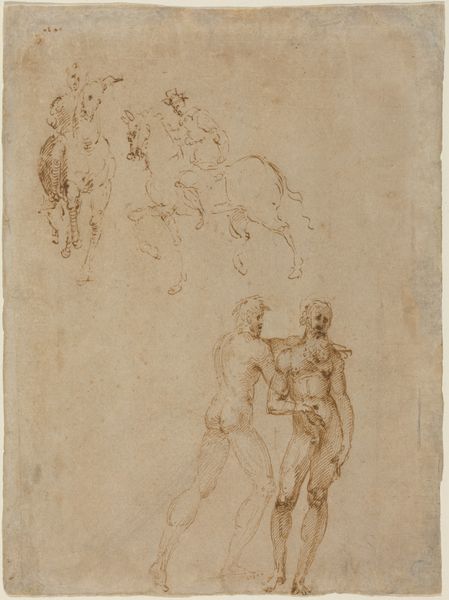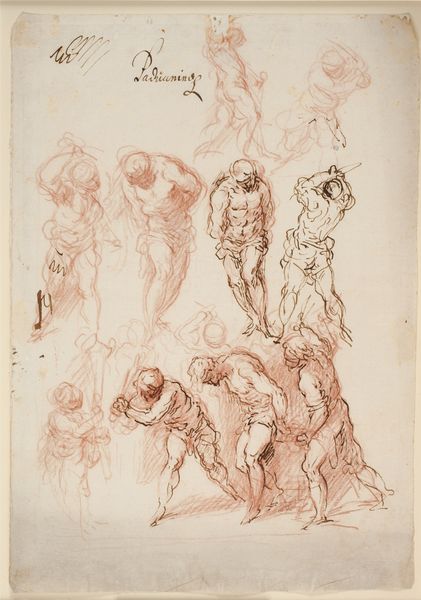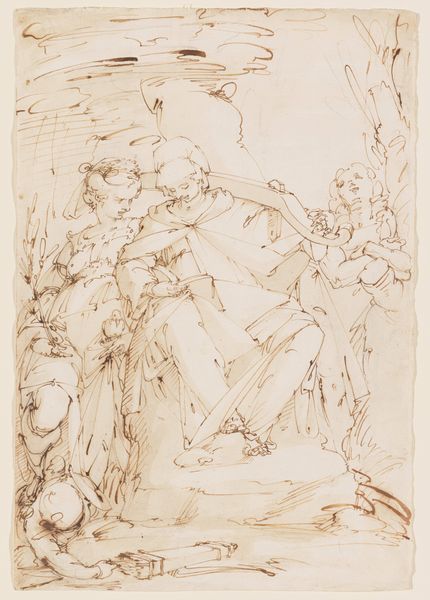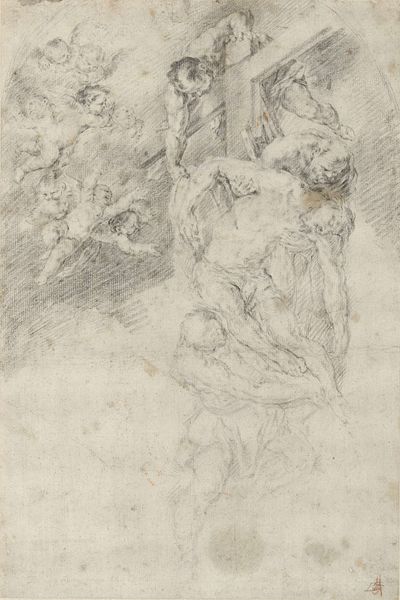
Studies of Christ Healing the Blind Man, Saint Philip Benizzi, and Saint Sebastian c. 1611
0:00
0:00
drawing, ink
#
drawing
#
venetian-painting
#
pencil sketch
#
figuration
#
11_renaissance
#
ink
#
history-painting
Dimensions: sheet: 35 x 24.9 cm (13 3/4 x 9 13/16 in.)
Copyright: National Gallery of Art: CC0 1.0
Curator: This captivating sheet of sketches is titled "Studies of Christ Healing the Blind Man, Saint Philip Benizzi, and Saint Sebastian," rendered around 1611 by Palma il Giovane. The ink and pencil dance across the page in a flurry of devotional energy. What’s your first impression? Editor: Raw. It feels like a glimpse into the artist's thought process. A swirl of ideas barely contained within the frame, rendered in restless lines. The tentative nature of the sketching gives it an incredible intimacy, like eavesdropping on a prayer. Curator: Intimacy, that's spot on. Palma, from his Venetian perch, gives us not polished perfection but a raw and energetic exploration of faith. These are, as the title suggests, studies—a symphony of possibilities vying for attention on a single plane. Each figure hints at a narrative, fragmented and potent. Editor: The grouping of Saint Philip Benizzi is so poignant. What are we to read from the expressions on their faces? The people huddled around. Do they lack agency? It's as though their individual identities are subsumed, acting as witness rather than actor. Curator: Absolutely. Palma is toying with how a crowd reacts—the power of collective faith made manifest. Note the figure of Christ—Palma is playing with depicting him, as a miracle, the ability to look and feel at once in so many different perspectives—very meta. It shows us a real commitment, in that era, to making this sort of image the best that it can be through studying what actually moves people to emotion. Editor: Speaking of that emotion... it almost romanticizes the martyrdom. What happens when Saint Sebastian's suffering becomes aestheticized? What are the ethics of showing it so openly? It makes me queasy thinking about who the image seeks to cater to. It plays into well-established tropes. Curator: An uncomfortable queasiness that's valid. He wasn’t afraid to let it all spill out onto the page. These weren't just religious figures; they were characters in Palma's visual language—perhaps an attempt to grapple with his relationship to religion as much as he tries to show its connection to the world around him. Editor: I agree, there is power in his chaos, his visual questioning, not presenting dogma, but presenting many facets of spirituality at once. Curator: Indeed, there’s a beauty in seeing an artist's mind at work, wrestling with big ideas in such an immediate and expressive way. Editor: It's an important reminder that faith, like art, is often found in the messy, unresolved questions rather than the easy answers.
Comments
No comments
Be the first to comment and join the conversation on the ultimate creative platform.
